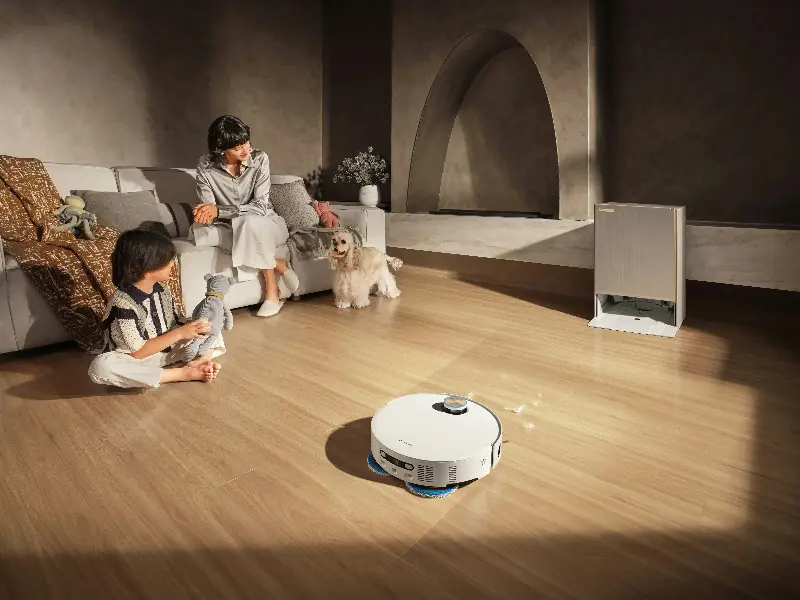
Robot vacuums have glided into our homes with a quiet promise: to take the hassle out of keeping floors clean. Their circular, smart designs are hard to ignore—especially as they edge along the carpet while you sip your morning coffee. But are these little machines actually ready to replace the elbow grease of traditional cleaning? Let’s get under the plastic shell and explore the facts and myths surrounding robot vacuum cleaners.
The Appeal of Effortless Cleaning
The magic of robot vacuums lies in their promise of automation. With the push of a button, these devices set out to clean, often working while you’re busy with other things or out of the house. Recent advancements have given rise to features like smart navigation, voice control, app scheduling, and even self-emptying dustbins.
For many, especially those with busy lifestyles, the robot vacuum is a game-changer. Surveys consistently show that people appreciate the time saved and the mental freedom from not having to vacuum as often. Parents with toddlers even describe robot vacuums as a lifesaver, quietly gobbling crumbs on demand.
Not only do they tackle everyday dust and pet hair, but they can also help keep allergies at bay with regular cleaning cycles. For elderly users or those with mobility challenges, robot vacuums can truly boost independence at home.
What Robot Vacuums Do Well
Technologically, robot vacuums now come equipped with a surprising range of sensors. High-end models from brands like iRobot, Roborock, and Eufy use LIDAR or visual mapping systems to thoroughly scan floor plans, avoiding tumbling down stairs or repeatedly bumping into furniture. These machines can remember multiple rooms, detect high-dirt areas, and adjust their cleaning strength on different surfaces.
Many modern robot vacuums have a slim profile, sneaking under beds and couches where traditional vacuum heads struggle to reach. Some can even mop, picking up sticky stains and fine dust. For pet owners, specialized brushes and HEPA filters can make a significant difference in daily maintenance.
A standout fact: a well-programmed robot vacuum can clean most accessible floor surfaces in a standard apartment or open-plan house more frequently than most humans would manage, helping keep visual mess and light dust at bay.

Shortcomings and Realistic Expectations
Despite how far technology has come, robot vacuums have their limitations. While they’re perfect for daily maintenance and preventing buildup, these devices rarely match the deep-clean power and flexibility of manual vacuums—especially on thick rugs, high-pile carpets, or stairs.
Robot vacuums can get confused by clutter, cables, socks, and stray LEGO bricks. Even with object recognition, there’s no substitute yet for the speed and adaptability of the human eye: robot vacuums may miss small messes near table legs or skip over pet accidents altogether. In homes with multiple floor levels, manually moving the robot or owning more than one is necessary—a hassle that undercuts “full automation.”
Emptying the dustbin still falls to you, unless you’ve splurged on a self-emptying station. Filters, sensors, and brushes all require semi-regular maintenance to keep machines running smoothly. For big spills or ingrained dirt, a full-size vacuum or a mop and bucket remains the necessary backup.
Comparing Costs and Value
Pricing can vary dramatically. Budget models start at around $150—for basic models without mapping or smart features—while premium robots can cost upwards of $1,000, especially with self-emptying functionality or advanced mopping. Factor in ongoing costs like replacement brushes and filters (about $20-$60 a year, depending on use).
When comparing to a regular vacuum cleaner (often much more affordable up front), the robot’s value lies in consistent maintenance rather than outright cleaning power. If you’re the type to vacuum thoroughly and regularly, you may not see a robot vacuum as an upgrade. However, for many households, the extra cost is offset by convenience and maintaining cleaner floors with minimal input.

Finding the Right Balance at Home
Robot vacuums are best seen as teammates, not outright substitutes, in the quest for a spotless home. They shine in daily upkeep, helping to reduce effort and stress, but do not fully erase the need for periodic deep-cleaning. For homes with simple layouts, hard floors, and few obstacles, robots can confidently handle 80-90% of cleaning tasks.
Pet owners, busy professionals, and the tech-enthused will likely get the most out of robotic vacuums. For fans of meticulous housework or those living in homes with many stairs and cluttered spaces, think of robots as helpful sidekicks that can extend the time between your thorough cleanings.
Ultimately, no robot yet surpasses a motivated human wielding a vacuum, but they can make keeping up with dirt, hair, and dust a far less daunting chore.
The march of cleaning technology isn’t slowing down. As AI and robot sensors improve, the gap between human and machine may soon shrink. For now, embrace your robot vacuum as a smart, hard-working assistant—but keep your trusty upright on standby for cleaning days that call for a human touch.
